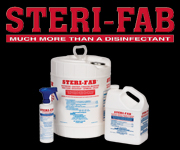Windows and doors are significant contributors to a building’s energy efficiency. Poorly designed or outdated windows and doors can result in thermal inefficiencies, leading to increased heating and cooling costs. Modern construction practices prioritize energy-efficient materials and designs to create a more sustainable and cost-effective building envelope.
Here’s what you need to know when it comes to making your next selection of windows and doors on your campus.
High-Performance Windows
Today’s construction industry benefits from a variety of high-performance window technologies. Double or triple-pane windows, low-emissivity coatings, and insulated frames are just a few examples. These features not only enhance insulation but also contribute to soundproofing and overall occupant comfort. When selecting windows, it’s crucial to consider the climate and orientation of the building to maximize energy gains and losses.
The quality of materials is also a major factor. Steel has better natural insulating capability compared to other metals, conducting heat and cold at one-fifth the rate of aluminum. Aluminum products require a thermal break just to match the natural thermal performance of steel. The minimal frame dimensions of steel windows and doors further lessen thermal transfer by reducing surface exposure.
Retrofit and historic renovation projects benefit from over a century of manufacturing and technical advancements—insulated and low-E glass, and integral-groove weatherstripping to name a few—coupled with slim, historically accurate sightlines. Modern safety features such as hurricane resistance can be incorporated into steel window systems and simultaneously complement the visual integrity of period buildings.
Architects may still specify a thermal break despite the natural thermal properties of steel. It is important to understand that adding a typical thermal break into any metal frame results in dramatically weakening the material. This is because a traditional thermal break splits the frame into interior and exterior pieces and then reconnects them with a weaker insulating material. An advanced alternative solution available from Hope’s Windows, Inc., is Thermal Evolution™ technology, which ensures that the solid steel profiles remain solid for the full depth of the frame, thus maintaining the structural integrity of the steel.
These properties and features, together with modern advancements in glazing, result in exceptional thermal performance and condensation resistance for steel windows. Doors, sometimes overlooked in terms of energy efficiency, are equally important. Insulated doors with airtight seals help prevent drafts and maintain a consistent indoor temperature. As with windows, doors made of steel offer sustainable solutions to create healthy indoor educational environments with a lower environmental impact. Steel windows and doors are energy efficient and impervious to air and water infiltration, crafted from recycled steel, and finished with environmentally friendly coatings. These strong and extremely durable windows and doors achieve unparalleled life cycle value and assist building owners and architects seeking LEED certification from the U.S. Green Building Council.
Stress Sustainability
Here are a few of the most impactful ways private university and college campuses are prioritizing environmentally friendly building practices:
- Conserve Natural Resources:
Steel is the most recycled material in the United States. Each year, the steel industry saves enough energy through recycling to power 18 million homes—one-fifth of the nation’s households. Choose high-quality steel windows and doors that are made with hot-rolled frame profiles that are 100 percent recycled steel. - Sustainability: The strength and durability of solid, hot-rolled steel doors consistently outperform wood, aluminum and vinyl products. With their proven ability to last for a century or longer, steel doors provide an unparalleled life cycle value.
- Eco-Friendly Coatings: The most advanced pretreatment and finishing processes available for steel are lead free, contain zero hazardous air pollutants (HAPs), and have ultra-low volatile organic compounds (VOC), resulting in an earth-friendly product with unlimited color options and long-term protection against corrosion and abrasion. Steel finishing processes exceed the most rigorous testing standards and are carefully scrutinized to ensure products will perform, both aesthetically and functionally, for decades to come and with extremely low maintenance requirements.
LEED Certification
LEED certification provides a framework for recognizing and rewarding sustainable building practices. The integration of energy-efficient solid, hot-rolled steel windows and doors can contribute significantly to earning LEED credits. Categories such as Energy and Atmosphere, Materials and Resources, and Indoor Environmental Quality are particularly influenced by the choices made in window and door selection.
Strategies for LEED Credits
- Optimal Energy Performance: Choose windows and doors with high-energy performance ratings to maximize energy savings.
- Materials and Resources: Use recycled or locally sourced materials for window and door construction to earn additional credits.
- Indoor Environmental Quality: Select windows and doors that enhance natural lighting and ventilation, promoting a healthier indoor environment.
As the construction industry continues to evolve, integrating energy-efficient solid hot-rolled steel windows and doors will become increasingly popular. The benefits extend beyond cost savings to encompass environmental stewardship and a commitment to creating spaces that prioritize the well-being of occupants. By leveraging these elements, builders not only enhance the overall efficiency of their projects but also position themselves for LEED certification, setting a new standard for sustainable construction practices.










